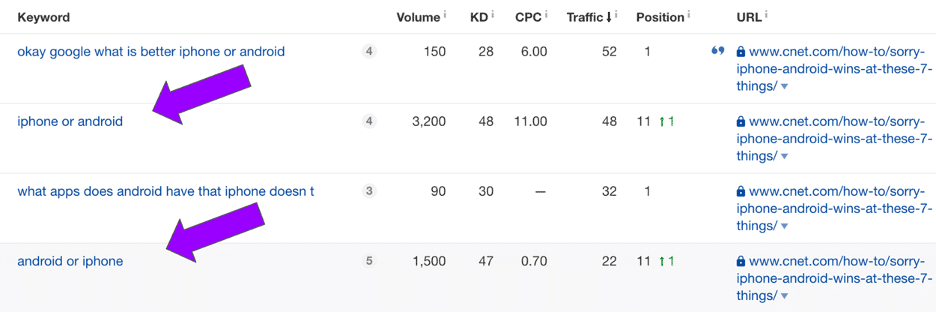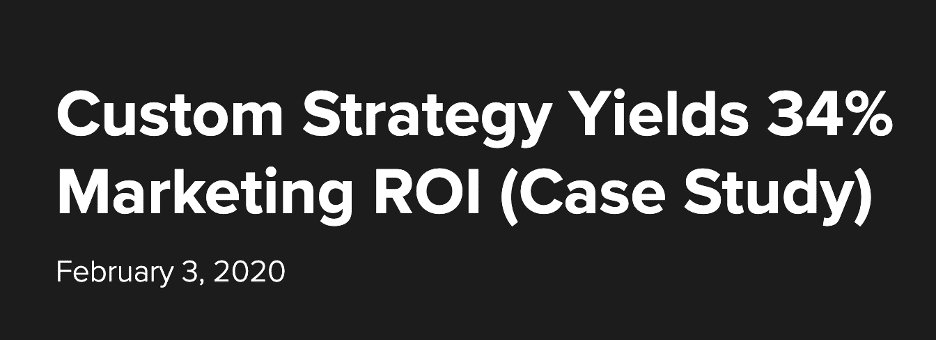Now, not every reviewer will take the bait and call in; some have already moved on, some won’t see it, but every single person – forever – who sees that negative review sees that the business reached out and tried to make things right. This, in itself, is major. Stats show us that somewhere in the order of 90% of people who read reviews actively scan for responses from businesses. When people looking at the review see that the company cared, it sends a powerful and positive message that can directly counteract the bad review.
Insights
Whether a business wants to hear it or not, online reviews represent a window into people’s perceptions of their business drenched in honesty. Suppose a company gets the occasional one-star review, and most of the time its 4’s and 5’s; that’s one thing. In that case, if they consistently get negative reviews about a given product or service, it’s probably time to ditch that product or service.
The ORM from Rocket Driver is connected to our Business Center dashboard system. Inside BC, clients have access to real-time analytics and reporting; along with this is the ability to watch the mentions, reviews, and other critical pieces of data roll in. This is a powerful business tool for many businesses because it gives them an eye-in-the-sky style view of the ORM campaign itself and their own business, a place to reflect. Big picture, this is a hugely powerful tool.
Are your content headlines optimized for the search intent?
Are your content headlines optimized for the search intent? If you’re not sure, you’ll find this guide helpful. Search intent (also called SEO intent) means understanding the motivations behind a search query. It’s one of the latest Google requirements that has profound implications for eCommerce businesses like yours.
For your headlines to attract traffic, you need to optimize them for searcher intent. This way, you’re giving your content the best chance of being displayed to your intended customers.
In this guide, we’re going to share four proven tips on writing the headlines for eCommerce blog content and digital ads.
1. Ask a Question the Customers Might Have
“How to generate leads for eCommerce”
When a search request is a question-type, then Google understands it as an informational search. This means that the user wants to learn something. It will adjust the results to feature more instructional and information-rich pages and minimize those from retailers.
For example, let’s say we’d like to choose a smartphone. We’re not exactly sure if we want an Android or iOS, so we turn to Google. As you can see from the image below, the headlines it found came in the form of questions. The one on the top, for example, matches the question beautifully, inviting the searcher to continue the conversion.

By writing headlines this way, you can increase the chance of Google using your content.
The idea is to match the question with the one that Google users have, increasing the relevance of your headline in the search results.
Pro tip: don’t just ask the question in the headline. Add some minor details that attract the attention of searchers even more.
For example, for the “Android vs. iPhone 2020” request, we can add a detail that captures attention and “pulls them in,” like:
“A short version of the question” + “An attention-grabbing detail.”
Here’s a good example:

And here’s one more from CNET.

Even though the headline doesn’t have “Android or iPhone,” the article still ranks for this keyword because it nailed the searcher’s intent, and people love it.

So, you can go for headlines like these (treat these as templates):
- Android or iOS? X Things Everybody Misses
- Choosing between Android or iOS? This Platform Wins, According to Millennials.
2. Add Numbers
People perceive the headlines containing numbers and facts and those without them differently.
Having a number like a statistic facilitates the sense of predictability and makes the headline look reliable. In other cases, numbers help with clarifying something by providing a specific fact.
So, headlines with numbers minimize distrust and uncertainty by providing specifics.
Let’s compare a couple of headlines ourselves.
Which of the following options provides more details on the time commitment and looks more reliable to you?
- The best guide to inbound marketing
- 5 inbound marketing techniques that generated 10,000 leads.
Chances are, you went with the second option, and rightfully so.
Number five in the headline gives you some idea of what to expect in terms of the reading time.
Next, the mentioned fact that the techniques generated 10,000 leads suggested that they worked great for at least one business before. This makes it look more reliable compared to the first option.
Here’s how businesses are using this trick.
The ad below includes a price for a car rental service: $7 a day. This makes it stand out and provides some answers about the business right away.

Headlines for blog articles are a must-do here.
For example, look at how this blog post uses a number to convey the potential benefit for reading.

There’s also some additional motivation to open this content piece. It comes with the indication that it’s not just a blog but a case study.
Case studies are generally more prevalent than simple blog articles, so encouraging clicks is another significant move.
This trick should work exceptionally well for B2B businesses.
Since their clients need to make buying decisions based on hard data and evidence, producing such content should be one of their main content marketing strategy goals.
3. Use Tools for Writing and SEO
Sometimes, writing SEO-optimized, easy-to-read headlines for content marketing is challenging. Even for people who do it regularly.
As the participants in this content marketing expert roundup shared, one has to be able to write consistently to turn content into something that brings revenues.
How consistently? Well, you need to commit yourself to writing 100, 500, 1000 words per day – depending on your goals, of course – and clear up your schedule to do it.
But I get it; you’re a busy business owner, and writing and optimizing daily might not be possible. The same goes for marketing professionals working in small teams.
But that’s okay. It’s 2020, so there’s a lot of writing and SEO tools out there to help.
Need good recommendations? You can use keyword research tools like UberSuggest and Ahrefs for optimization and writing tools like BestWritingAdvisor.com and Grammarly.
For those who write ads: check out Karooya; it’s an ad preview tool that will keep you organized and within Google’s limits.
4. Use Keywords that Share Mutual Intent
You might be wondering why we’re still not talking about some things we can do with keywords.
Besides the obvious stuff like adding them in naturally in headlines, you can also try using multiple keywords.
But there’s a trick.
If a headline has multiple keywords with different search intent, Google might have difficulties understanding it.
So, its visibility might be lower.
A simple example would be the keywords “swiss watches” and “electric bikes,” which don’t match.
On the other hand, the keywords “cheap smartphones” and “budget smartphones” match the same intent: find an affordable smartphone.
That’s why you need to pay attention to search intent when researching keywords for blog or ad headlines.
If you run a content piece from a competitor on a keyword research tool like UberSuggest or Ahrefs, go through the keywords it ranks for.
For example, if you check the CNET as mentioned above article this way, you’ll see that some keywords are, indeed, excellent for a headline.
“What apps does android have that iPhone doesn’t” and “iPhone or android” are the best candidates from this small batch.

Now we’re cookin’!
They make a good headline like “iPhone or Android? X Things Android Has That iPhone Doesn’t.”
Sounds like a great article, agree?
Both parts are perfect for one search intent (research which option is better – iPhone or Android) and add great detail in the form of a keyword-optimized idea.
So, the bottom line here is simple: align the search intent in case you’re using two keywords or keyword phrases in headlines.
Remember About Value
Writing irresistible, click-worthy headlines can easily make you forget why you’re doing it in the first place: provide value to your customers.
Keep this in mind every time before hitting that Publish button. With Google prioritizing the value and usefulness of the content, too, it comes down to your ability to balance your interests and the interests of your potential customers.
Hopefully, this post just got you closer to that.
Bio:
Dorian Martin is a professional writer that runs his website on everything business-related. His passion for helping his audience leads him to frequently work with some of the best dissertation writing services, where he provides his writing experience. In his spare time, Dorian likes reading and spending time with his dog.


